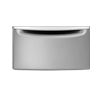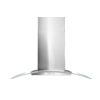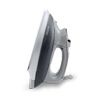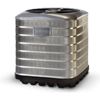Drain Line Installation
Maytag Dishwasher Drain Line Installation: A Complete Guide
Installing a Maytag dishwasher drain line is a task that can be managed with the right guidance. This comprehensive guide will walk you through each step of dishwasher drain line installation, ensuring a successful setup while avoiding common mistakes. Whether you're updating an existing line or setting up a new Maytag dishwasher, understanding the process is essential for optimal appliance performance. In this guide, we'll explore how to install a dishwasher drain hose, how to connect a dishwasher drain hose, and provide a detailed step-by-step process for dishwasher drain hose installation, equipping you with the knowledge to handle installing a dishwasher drain line confidently.
Preparing for Installation
Preparation is crucial for a seamless dishwasher drain line installation. Begin by evaluating your kitchen layout to guarantee efficient drainage. The drain line should follow a direct path to the sink or waste disposal, avoiding sharp bends or kinks that could obstruct water flow. Consider any obstacles, such as cabinetry or plumbing, that may impact the installation.
For safety, turn off the water supply and power to the dishwasher. Locate the shut-off valve under the sink and ensure it's turned off. Additionally, unplug the dishwasher from the wall outlet to prevent electrical hazards during installation.
Create a clear workspace by removing items around the dishwasher, such as floor mats or furniture, to prevent damage to your belongings. This setup will provide ample space for installation and contribute to a safe working environment. With these preparations complete, you can proceed with installing a dishwasher drain efficiently and safely.
Step-by-Step Installation Process
Correct installation of the dishwasher drain line is vital for preventing leaks and ensuring optimal performance. Begin by attaching the drain line to your Maytag dishwasher. Locate the drain outlet on the appliance's side or back, ensuring the rubber gasket is properly aligned for a snug fit. Secure the connection using a hose clamp to prevent water leakage.
Route the drain line towards your sink or disposal unit. It’s important to create a high loop in the drain line to prevent siphoning and potential backflow into the dishwasher. Ensure the line runs smoothly without sharp bends or kinks, which could obstruct water flow and cause drainage problems.
With the drain line in place, tighten all connections securely. Check that the hose clamp is fastened adequately and that the drain line is attached firmly to both the dishwasher and the disposal or sink. After securing the connections, test for leaks by running a short cycle on your dishwasher. Observe the drain connections for any signs of water leakage. If leaks are detected, turn off the dishwasher, tighten the connections, and retest until all connections are secure.
If the drain line is not installed properly, the dishwasher will not drain, and residual water will remain in the bottom of the tub, which can cause leaks.
If you would like to download or view product literature for your appliance, please visit our Manuals and Literature page.

















